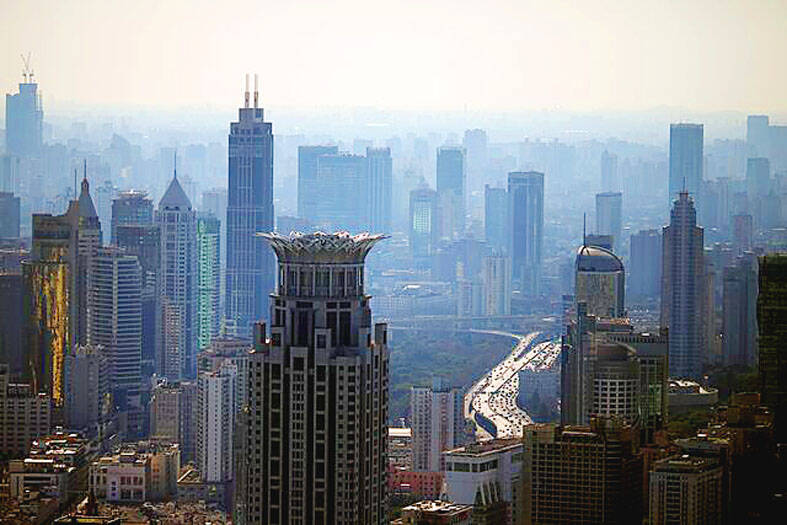-
By Chen Yu-fu and Esme Yeh /
Staff reporter, with staff writer
The Chinese Communist Party (CCP) might ramp up intimidation and inducement work against Taiwanese amid increasing economic risks in China, the Mainland Affairs Council (MAC) said in a report.
The CCP has been using what it called “cross-strait integrated development” measures, such as the Pingtan Comprehensive Experimental Zone (平潭綜合實驗區) in its Fujian Province, to attract Taiwanese businesspeople to invest in the country, the report said.
China’s so-called “demonstration zones” aim for integrated development across the Taiwan Strait, leveraging various preferential or subsidy programs to entice Taiwanese people and companies into investing in the nation to help stabilize supply chains of certain industries, it said.

Photo: Reuters
The CCP might ramp up intimidation and inducement against Taiwan to facilitate “cross-strait integration and unification,” it added.
Therefore, the government would continue to warn Taiwanese businesspeople about the risks of investing in China and help them develop diversification plans, the report said.
It would also review cross-strait economic and trade policies or regulations to enhance risk management and reduce reliance on a single market, thereby ensuring the economic security and exchange orders of Taiwan, it said.
The CCP in March at the National People’s Congress set the target of boosting GDP by 5 percent this year, and decided to adopt a more proactive fiscal policy and a moderately accommodative monetary policy, the report said.
The CCP demands loyalty and conducts political supervision by penalizing what it identified as corrupt practices across many different fields, such as finance, state-owned enterprises, energy, healthcare and infrastructure construction, it said.
As of last month, 38 CCP members had been dismissed for misconduct or corruption, it added.
Social incidents such as indiscriminate attacks became frequent in China due to its stagnant economy, it said, referring to a school bullying incident that occurred in Sichuan’s Jiangyou City, which provoked large-scale conflicts between the public and police.
Although China’s GDP grew 5.2 percent in the first half of this year, its manufacturing purchasing managers’ index score was 49.3 in July, marking four consecutive months of contraction, it said.
Loan demand for the second quarter declined 16.8 percent from the previous quarter, hitting a new low since the statistics began to be published in 2004, the report said.
An analysis from a research institution said that China’s economic downturn might be caused by a fading pre-US-tariff surge in exports.
The country’s domestic demand remained sluggish, and the investor confidence was low, it said.
The ministry cited an IMF report as estimating that China’s GDP would grow 4.8 percent this year, saying that considering the challenges the country is facing, its economic performance in the second half of the year could be worse than in the first half.
The global economic order and supply chains are facing unprecedented challenges due to conflicts across the world and economic uncertainty, it said.
Such challenges have also contributed to China’s internal and external problems, such as rising local government debts, the fragile housing market, high youth unemployment rate and continued deflation, it added.